Shwedagon Pagoda 
Then King Banya U (AD 1353-1385) and his descendents reconstructed and enlarged it and raised it still higher. Queen Shin Saw Pu, the grand daughter of Banya U, had the pagoda enlarged and raised. She was the first Queen who donated and gilded the pagoda with gold equal to her weight. Her heir and son-in-law King Dhammazedi also continued to donate gold equal to his weight and that of his queen. He cast a huge bell 8 cubits in width at the mouth and 12 cubits in height. It was placed in a hall at the southern entrance of the pagoda.This huge bell was stolen by Filipe de Brittoe Nicote, a Portuguese merchant who later conquered Thanlyin.
He intended to melt it down and cast it into cannons. He was unable to achieve his plan, as the bell was lost in the Yangon River . Later Myanmar artisans claimed the bell and placed at the Shwedagon. Numerous Myanmar kings also made major developments to the pagoda and the surrounds, installing new Htis (Glorious Crown), gilding the pagoda and building rest houses and prayer halls.| Maha Wi Zaya Pagoda
This was built in 1980 as a replica of Shwezigon Pagoda at Nyaung Oo (Bagan). It is near the Shwedagon Pagoda, and the site is on the hillock where Queen Shin Saw Pu used to meditate and recite prayers whenever she visited Shwedagon. It contains relics of Buddha donated by the king of Nepal while visiting Myanmar . The construction design is mixed with modern and classic. There is a picture on the ceiling showing the positions of the constellation at the beginning of construction. |
| Sacred Tooth Relic Pagoda
While the Sixth Buddhist Synod was convening in Yangon in 1955, the People's Republic of China sent a good will mission of religious delegates along with a Genuine Tooth Relic of Lord Buddha. This Sacred Tooth is sheltered in the Kwang Yi Su Temple in Beijing . It was sheltered in Maha Pasana Cave for respect and devotional admiration of the monks, laity and the venerable abbots of Buddhist countries who were attending the Synod. In April of 1994, the Chinese religious delegates visited and presented two replicas of the Sacred Tooth for religious devotion and worship in Myanmar . The Dhama Pala hillock in Mayangon Township , Yangon (just a few hundred yards from Kaba Aye Pagoda) and the Shar Taw village in Amarapura Township , Mandalay Division were chosen and two Pagodas were constructed enshrining the Tooth Relics. These pagodas are reproduction of the Ananda at Bagan. |
Lawka Chantha Abhaya Labha Muni Image
U Taw Taw requested permission from the leaders of State to carve this marble rock into a grand Buddha image. The Chairman of the State Peace and Development Council Senior General Than Shwe gave guidance and granted permission for it to be conveyed to Yangon for public obeisance as a Buddha Image accord with religious tradition. The image was conveyed along the Ayeyarwaddy River in July 2000 on a 'Yadana Shwephaungdaw' (a huge raft decorated with jewels and gold) and taken to Mindama Hill, Yangon on August 2000. |
| Ah Lane Nga Sint
The name means a five-storey tower on the precincts of the pagoda. It indicates the five stages of the non-physical worlds. |
Mai Lamu Pagoda
The interesting feature of this pagoda is a number of huge Buddha images and legendary figures such as spirits and mythical creatures associated with the Okkalapa city of that era. The pagoda was named after Mai Lamu, the mother of King Okkalapa, who originally founded Shwe Dagon. |
Bo Ta Thaung Pagoda Located on the Yangon River bank, the Bo Ta Thaung has for centuries been a navigator's landmark just as the Bu Paya was in ancient Bagan. Bo means a military officer and Ta Thaung means a thousand military personnel or vanguards, which were said to have constituted a guard of honour when the Buddhas' relics were personally received by King Okkalapa from India . The pagoda was hit by an allied forces bomb in November 1943, and was rebuilt from public contributions in 1953. The removal of the debris afforded authentication of the origin of this pagoda because the excavations revealed a relic chamber and a stone casket inside it, shaped like a pagoda, and quite a variety of treasures such as precious stones, ornaments, engraved terra-cotta plaques, gold, silver, and brass and stone images. As many as 700 images were found. One terra cotta plaque is of great historical significance because one side bears the image of Lord Buddha and other a Pali inscription in the evolved Brahmin script of South India . The script had been adopted by the Mon. The new pagoda, built of reinforced concrete, closely follows the destroyed original and its height is 131 feet 8 inches. It retains the ancient motif and hollow inside so that people can enter. Another unique feature is the showcases that have been worked into the walls all round to house the many relics that were unearthed during the excavation. In the centre, the exact spot of the old reliquary, is a well-like hollow which will be the depository of the sacred relics. |
Maha Pasana Guha  Maha Pasana Guha or the great cave was created simultaneously with the Kaba Aye Pagoda in 1952. It is a replica of the Satta Panni cave where the First Buddhist Synod was convened over 2500 years ago in Rajagah now known as Rajgir in Bihar of India. The Maha Pasana Cave has six huge concrete pillars and six entrances to mark the Sixth Great Synod. |
Kaba Aye Pagoda
Kaba Aye, meaning World Peace, was built to commemorate the Sixth Buddha Synod in 1954, held in Maha Pasana Guha (Cave) within the same compound. |
Nga Htat Kyi Pagoda
Nga Htat Kyi Pagoda is a sitting image of Buddha located in the Ashay Tawya Kyaung Tank. |
| Chauk Htat Kyi Pagoda
This pagoda with its reclining image of Buddha is on Shwegonedaing Road , opposite the Nga Htat Kyi Pagoda.
|
Koe Htat Kyi Pagoda
It has a 65 foot high sitting image enshrining relics of the Buddha, and is located in Sanchaung. There is also a reliquary inside the image of the Buddha.
|
Planetarium
Programs are displayed at the Planetarium in collaboration with astrological experts. Complex machinery used at the Planetarium is maintained with the co-operation of Japanese experts and Myanmar engineers. The Planetarium is on Ahlone Road, Dagon Township, Yangon.
|
|
Displays includes showrooms featuring the Thihathana Throne, the Yadanabon Period, epigraphy and calligraphy, the Myanmar prehistoric period, natural history, royal regalia, Myanmar history, Myanmar performing arts, Myanmar traditional folk art, Myanmar ancient ornaments, national races culture, and Buddha images. The museum also features two art galleries showing Myanmar work. The National Museum is located on Pyay Road, Dagon Township, Yangon. It is opened daily. |
|
Defence Services Museum The Museum is on Shwedagon Pagoda Road in Dagon Township, Yangon. |
|
Myanmar Gems Museum |
| Drugs Elimination Museum   This museum was opened on June 26, 2001 to commemorate the International Day Against Drug Abuse and Illicit Trafficking. The Museum documents the nation's fight against the scourge of drugs. Displays document the introduction of opium by colonial powers, and many other facts and artifacts. This museum was opened on June 26, 2001 to commemorate the International Day Against Drug Abuse and Illicit Trafficking. The Museum documents the nation's fight against the scourge of drugs. Displays document the introduction of opium by colonial powers, and many other facts and artifacts. The Museum is on the corner of Kyundaw Road and Hanthawaddy Road, Kamayut Township, Yangon. |
|
National Theatre of Yangon The Government of Union of Myanmar accepted the offer, and plans were drawn to construct the building in cooperation with Chinese engineers and Myanmar technicians and workers. Construction began on June 3, 1987, and was completed on December 27 1990 at a total cost of 150 million kyats. The theatre was officially opened on January 31, 1991. New seats have just been added.The theatre is used for cultural exchange programs with foreign countries, for departmental workshops, religious ceremonies, prize giving ceremonies, performing arts competitions, and for musical stage shows. |
Nat Shin Naung Memorable Tomb |
|
 There are about 300 tree species, totaling over 15,000 trees, planted in the Garden. Among them are such species as Thawkagyi, Linlun, Padiphyu, Meze, Karamek, Sagawa, Layhnyin, Zardeikpho, etc. Moreover, there exist 59 species of mammals, 60 species of birds, 18 species of reptiles, amounting to over 1,300 species. In addition, wild animals such as elephant, rhinoceros, tapir, hippopotamus, camel, tiger, lion, deer, various species of monkey, snake, tortoise, crocodile, various species of bird, a pair of tusks of the white elephant that died in 1219 - 1857 during the reign of King Thibaw, 72 feet long skeleton of a whale 72 feet in length, and a statue of Stegosaurus are also on display. There are about 300 tree species, totaling over 15,000 trees, planted in the Garden. Among them are such species as Thawkagyi, Linlun, Padiphyu, Meze, Karamek, Sagawa, Layhnyin, Zardeikpho, etc. Moreover, there exist 59 species of mammals, 60 species of birds, 18 species of reptiles, amounting to over 1,300 species. In addition, wild animals such as elephant, rhinoceros, tapir, hippopotamus, camel, tiger, lion, deer, various species of monkey, snake, tortoise, crocodile, various species of bird, a pair of tusks of the white elephant that died in 1219 - 1857 during the reign of King Thibaw, 72 feet long skeleton of a whale 72 feet in length, and a statue of Stegosaurus are also on display.When you come to Yangon, you should not miss the opportunity for one-stop observation of the collection of wild animals, birds, reptiles, indigenous to Myanmar, that would only be possible at Yangon Zoological Garden. Some of the opportunities for study and recreation include rides in elephant-cart, horse-cart, or on elephants and horses, free snake and elephant shows on weekends and public holidays, and an easy access to fauna and flora either for studies or for enjoyment. |

Hlawga Park 
This park was founded in 1982 at Mingaladon Township in Yangon Division, just 22 miles from downtown Yangon. Tigers, leopards, bears and other carnivorous animals are housed in the 62 acre park and in the mini zoo. Sambhur deer, barking deer, and hog deer freely graze in the 818 acres of natural forest. Attractions include elephant rides and shows, and 165 species of birds and plus 25 species of migratory birds also inhabit the park. Facilities include an environmental education centre, an information centre, a guide map, ample car parking, open decks and scenic picnic sites.







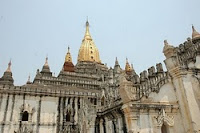
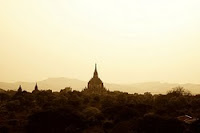




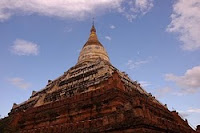
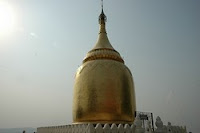

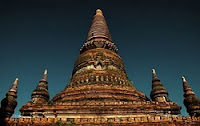

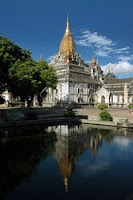
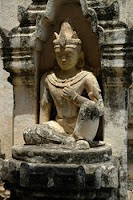



 The famous stone sculptor of Mandalay , U Taw Taw, found a significantly large marble rock measuring 37.8 feet x 24 feet x 11 feet and weighing 500 ton. The marble, flawless and of high quality, was found in Zakyin village, Mattaya Township , 21 miles north of Mandalay .
The famous stone sculptor of Mandalay , U Taw Taw, found a significantly large marble rock measuring 37.8 feet x 24 feet x 11 feet and weighing 500 ton. The marble, flawless and of high quality, was found in Zakyin village, Mattaya Township , 21 miles north of Mandalay .

















